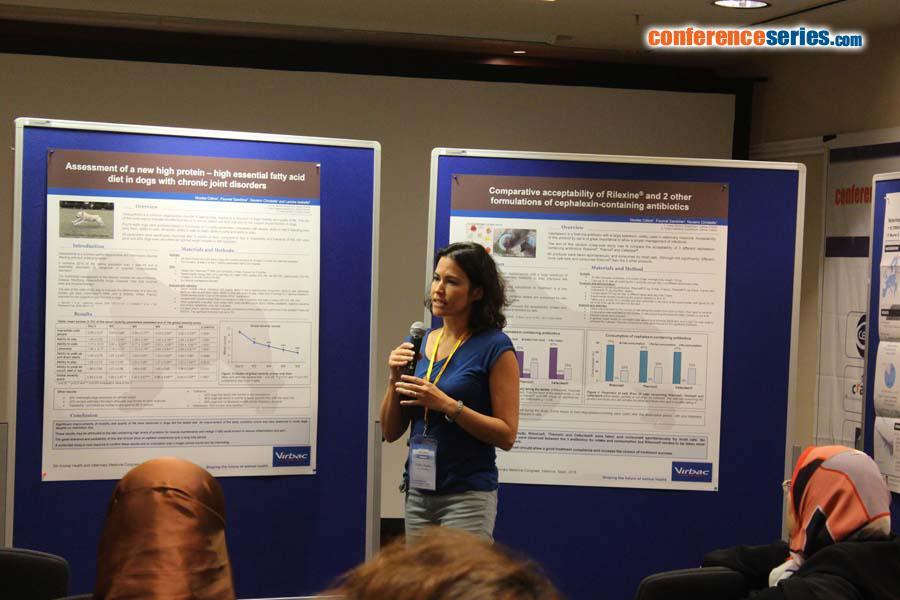
Céline Nicolas
Virbac Group, France
Title: Assessment of a new high protein and high essential fatty acid diet in dogs with chronic joint disorders
Biography
Biography: Céline Nicolas
Abstract
Osteoarthritis is a common degenerative disorder in ageing dogs. The multimodal management of the disease includes the use of NSAIDs, disease modifying osteoarthritis drugs; essential fatty acid enriched diets and physical therapy. The aim of this open study was to evaluate the effectiveness of a new dry dietetic pet food (VeterinaryTM HPM, Virbac, France) intended for the support of joint function in dogs. 53 client-owned adult and senior dogs with mobility disorders and for at least 3 months they were recruited. They were fed exclusively with the tested diet (metabolisable energy (ME): 373 kcal/100 g dry matter (DM), protein 35% ME, fat 38% ME, carbohydrate 27% ME, omega-3 3.3% DM and EPA 0.7% DM) for 2 months. No medical management for osteoarthritis was allowed during the study. Seven mobility criteria (interaction with people, ability to rise, ability to walk, lameness and abilities to walk on stairs, jump and play) were used to evaluate mobility disorder and were noted from 0 (normal) to 3 (serious alteration). For inclusion in the study, at least 3 criteria had to be above 0. The sum of the 7 scores defined the severity score. Assessments (questionnaires filled in by owners) were done on Day 0 (baseline) and then every 2 weeks (W2, W4, W6, W8). Other parameters like body weight (BW), body condition score (BCS), kibbles palatability, digestive tolerance and owners’ satisfaction were also evaluated. For each criterion, pair wise adjusted (Dunnett) comparisons of time points were performed in the repeated measures of ANOVA.
The significant threshold was set to 5%. 49 dogs completed the study and 48 dogs were analyzed for efficacy (one dog received prednisolone for skin treatment and was excluded). All criteria (mean scores) were significantly improved at W8 compared to Day 0 (p<0.05): interaction with people (0.4 vs. 0.88, respectively), ability to rise (0.94 vs. 1.44), ability to walk (0.54 vs. 1.17), lameness (0.88 vs. 1.46), ability to walk up and down stairs (1.24 vs. 1.50), ability to play (1.25 vs. 1.56) and ability to jump on couch, bed or car (1.36 vs. 1.68). The first four criteria and the mean severity score (6.44 at W8 vs. 9.48 at Day 0) were significantly improved from W2. 20% overweight dogs recovered an optimal weight despite no diet restriction and 35% owners estimated the dog’s silhouette was thinner or more muscular. Palatability was considered normal to very good by 86% pet owners. The digestive safety was high: 92% dogs had stools with normal or dry consistency; 86% dogs had stools in normal or fewer quantities than with the usual diet and 85% dogs had no flatulence or with similar frequency as usual. 78% owners were satisfied by the effects of this diet on their dog. Overall, the tested diet improved dogs’ mobility and their quality of life. These results may be attributed to the diet containing high levels of proteins for muscle maintenance and omega-3 fatty acids known to reduce inflammation and pain. The good tolerance and palatability should help for optimal compliance.




